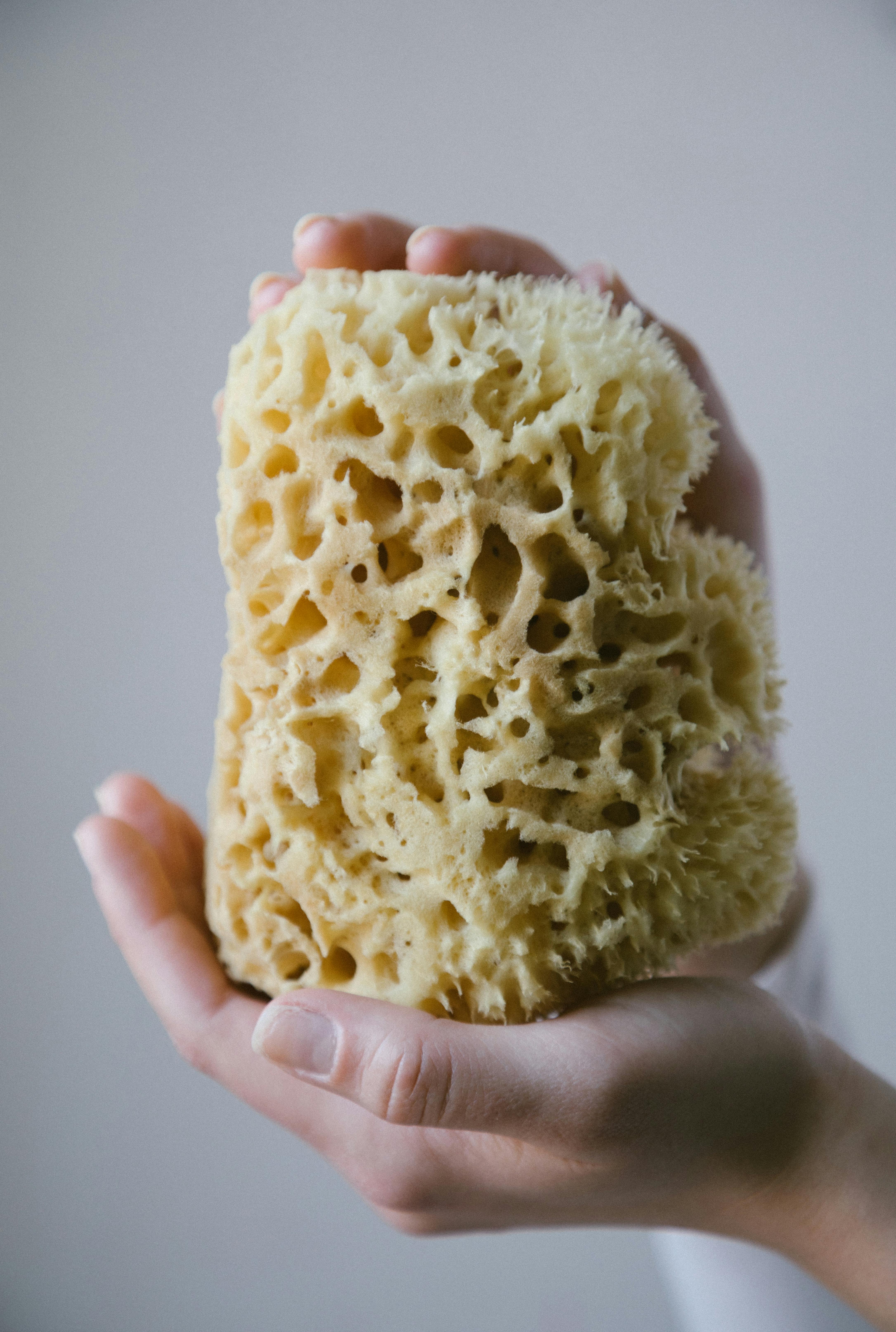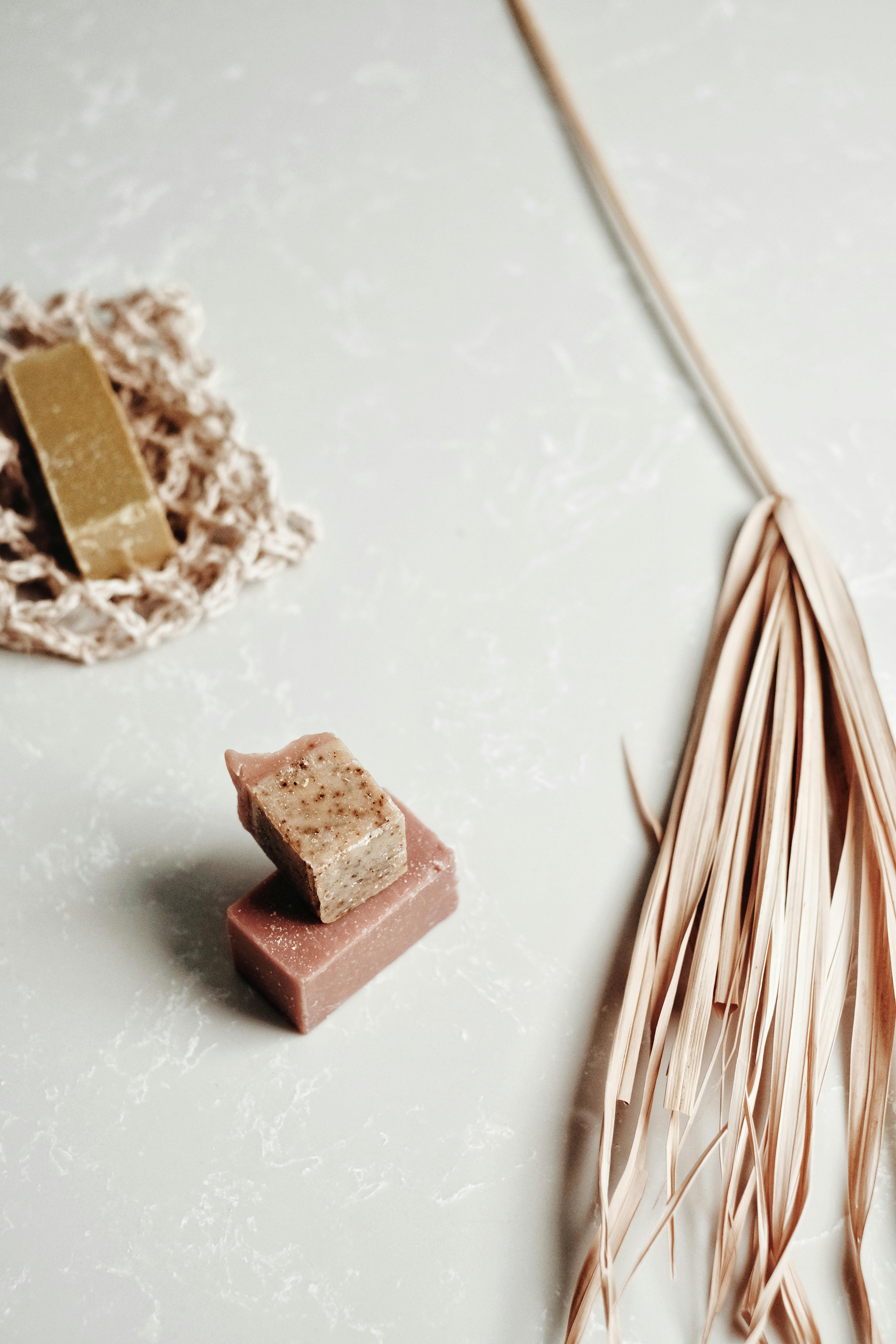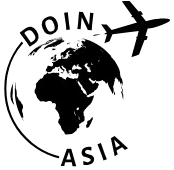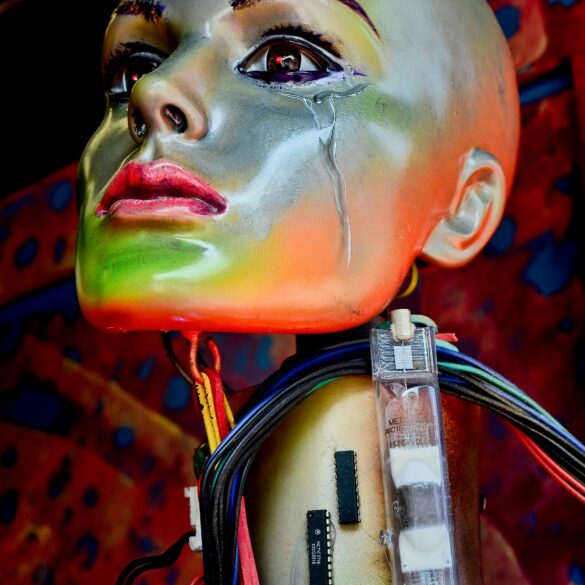K-Beauty Innovation: South Korea’s Skincare Revolution Drives Global Sustainability
Let’s begin with something nearly everyone in the beauty industry has been forced to reckon with lately: The speed and scope of innovation coming out of South Korea are—quite frankly—bonkers1. I know, I know, the phrase “K-beauty” gets thrown around a lot, but ask any skincare scientist, business owner, or even a moderately-obsessed serum-collector, and they’ll tell you: Korean brands keep rewriting the playbook. I personally realized this a few years back, at a Seoul trade show where I found myself in a crowd of global buyers and startup founders, all vying for the attention of a clean-beauty entrepreneur whose product line was simultaneously vegan, probiotic-derived, and packaged in seaweed-based bioplastic. Funny thing is, what seemed wild five years ago is suddenly the norm.
What really strikes me—as someone who’s both analyzed cosmetic market data and tested more sheet masks than I’d care to admit—is how South Korean skincare brands have managed to blend advanced science with sustainability in uniquely scalable ways2. It’s a story of relentless R&D, cultural values, and, perhaps most importantly, an uncanny knack for predicting what consumers want before they ask for it.
Why K-Beauty Leads Global Skincare Innovation
Ever wonder how a relatively small country transformed decades-old skincare routines on every continent? It didn’t happen overnight. South Korea’s dominance in the global skincare industry is the result of persistent, layered innovation paired with a cultural obsession for health, harmony, and skin perfection. Some industry analysts argue that the so-called “10-step routine” was a mere foot-in-the-door; today, diversity in formulations, ingredient transparency, and next-level textures dominate headlines around the world3.
Here’s what gets me every time: The vast majority of effective K-beauty concepts—think essence, skin prebiotics, or fermented ampoules—often originate from hardcore academic research funded by the country’s huge R&D budgets4. We’re not talking just marketing spin. These are serious scientific endeavors, tightly woven with the government’s export-driven business strategy. Take the fact that, even in 2023, South Korea invested over $200 million USD in cosmetic innovation and safety testing alone, with plenty more earmarked for next-gen materials and bio-dermatological research5.
Wichtige Erkenntnisse
What excites R&D leaders across Korea is the dynamic loop between consumer demand, product innovation, and government policy support. Essentially, it’s not just about “trends”—it’s about a national system that rewards new thinking.
“Korean beauty isn’t just a marketing category. It’s a rapidly evolving scientific movement.”
The Science of Sustainable K-Beauty: Ingredients, Labs, & Culture
Okay—let’s step back for a moment. “Sustainability” is thrown around so much these days that it’s borderline meaningless unless we pin down precisely what South Korea is doing differently. In practical terms, K-beauty’s sustainability edge starts with its raw materials. Fermentation, upcycling, and the country’s ongoing hunt for plant-based, renewable, or otherwise non-petroleum compounds have shaped a whole new category of eco-luxury skincare. Just last year, I trialed a moisturizer supposedly cultivated from Jeju-grown green tea stem cells extracted via a carbon neutral process; I’ll admit, the results were real—my skin genuinely glowed. But more importantly, the company produced zero microplastic waste in its manufacturing line.
The kicker? These moves aren’t just about international image. According to South Korea’s Ministry of Food and Drug Safety, 22% of newly registered K-beauty products in 2024 displayed “verified eco-innovation” claims, including upcycled botanicals, biodegradable packaging, and cruelty-free certification. I’ve seen more brands pursue third-party verification from organizations such as ECOCERT and Korea’s own Eco-Label system than ever before7.
Business Lessons From Korea’s Cosmetics Titans
Now here’s the real business lesson—one that’s shaped my own approach to brand strategy. South Korea’s leading cosmetic houses (names like Amorepacific, LG H&H, and Cosmax come up in every single investor call) don’t just chase fleeting trends. They institutionalize two game-changing concepts: speed-to-market and a feedback-driven product pipeline. In one memorable consulting project, I watched a product team roll out a newly-formulated ampoule—inspired by a community post about mask irritation—in less than 10 weeks, complete with full dermatological safety testing and digital launch components. Let that sink in for a moment. In the US or Europe, that cycle is often 9-12 months, if not longer8.
One could argue this rapid turnaround fosters waste, but I’m not convinced. South Korea’s “fail fast, scale smart” approach is only sustainable because they’ve woven in supply chain resilience, genuinely local sourcing, and scalable biotechnology. A peer at an OEM lab in Daejeon once told me, “We can retool our active ingredient tanks in under a week—if you give us a skin microbiome profile, we’ll have a matching clean formulation in days, not months.”
Business Breakthrough
Small, agile innovation teams—sometimes as few as three chemists and a product manager—drive the majority of K-beauty’s radical launches. That personal touch, combined with executive commitment to sustainability, quietly reshapes the value chain at every level9.
The Ingredients Revolution: Upcycling and Biotech
Biotech is not just a buzzword here. Let me illustrate with something you don’t see every day: a data table showing recent ingredient breakthroughs in sustainable K-beauty.
| Bestandteil | Herkunft | Vorteile | Sustainability Note |
|---|---|---|---|
| Fermented Soy Extract | Local Soybeans | Brightening, Barrier Repair | Byproduct upcycling, low-water process |
| Jeju Volcanic Ash | Jeju Island Lava Soil | Detoxifying, Oil Reduction | Naturally abundant, minimal processing |
| Postbiotic Lactobacillus | Cultured in-lab | Hydration, Redness Relief | No animal testing, rapid scale-up |
| Seaweed Biopolymer | Sea of Korea | Skin Barrier, Water Lock | Biodegradable, replaces microplastics |
“We’re seeing Western conglomerates scramble to localize ingredients, but Korea’s already built the playbook for closed-loop sourcing and biotech integration.”
Eco-Conscious K-Beauty: The Next Sustainable Wave
What’s clear from recent product launches and consumer behavior data is that “clean” is no longer good enough—a new level of sustainability is required. Gen Z shoppers in Korea (and increasingly worldwide, from Southeast Asia to the US West Coast) are demanding radical transparency, less plastic, and skin-first biochemistry that actually works. If I take a step back and look at my own buying habits, I realize I now instinctively skip brands without clear ingredient origin stories or compostable packaging. The switch is happening across demographics, and industry giants must keep up or be left behind.
Quick Data Hit
- 68% of South Korean skincare startups now use some form of upcycled ingredient in product launches (2024)
- 54% of new luxury skincare exports are “certified vegan”
- 3x increase in corporate investment toward biodegradable/compostable packaging versus 2020 figures10
“Sustainability is more than a trend—it’s what makes our brands investable and future-proof.”
What puzzles me sometimes is how few Western brands embed this thinking into their R&D chains—not just as box-checking, but as core strategy. The opportunity is wide open, yet it feels like only the boldest are leaning in.

Roadblocks and Honest Lessons: What Holds Us Back?
Now, I’d be doing everyone a disservice if I skipped the challenges. While South Korean innovation dazzles on paper, there are some tough realities beneath the surface. For starters, the relentless product development pace can strain regulatory systems—domestic and international. Back when I first started reporting on Korean cosmetic exports, several indie founders admitted that juggling evolving EU, US, and ASEAN certifications was the bane of their existence. One misstep on allergen listing or packaging claims, and an entire shipment can get delayed for months (true story: an $8M serum order for a French chain was held up by a missing INCI code). The more I talk to professionals, the more I recognize compliance is as much a business risk as a technical hurdle11.
Another stumbling block is greenwashing—sure, Korea’s leading on measurable sustainability, but as the market grows, so do misleading claims. Even as an industry insider, I’ve been duped by supposedly eco-friendly brands, only to discover non-compostable “bio” plastics or vague ingredient sourcing. Actually, let me clarify that: a lot of smaller firms struggle to access new biopolymers and must rely on third-party supply chains, which can muddy certification validity.
- Export barriers due to inconsistent global safety/eco certification rules
- Intellectual property protection for biotech processes is difficult but crucial
- Rising costs of local, renewable sources—especially after 2023 supply chain shocks
- Consumer confusion due to false or ambiguous “green” messaging
- Difficulty in scaling vegan/bioplastic packaging for low-margin segments
“Regulation can’t always keep up with new formulas. Brands that communicate honestly and embrace third-party audits will build long-term trust.”
Case Studies: Real-World K-Beauty Success Stories
Let me share a couple of authentic industry examples—names and details you can actually check.
- Amorepacific’s Sulwhasoo Concentrated Ginseng Renewing Cream: Harnesses locally grown ginseng using an enzyme-activated extraction, reducing water use by 40% and earning both global luxury awards and an Eco-Label certification12. What I love here is the cross-team learning: chemists adapted techniques from food fermentation, making a premium ingredient affordable and sustainable.
- Dr. Jart+ Cicapair: This derm-favorite was one of the first to market with skin-barrier probiotic complexes sourced using closed-loop biofermentation. The founder revealed in a 2023 interview that their pilot plant cuts manufacturing emissions by 38% versus the old process—a figure independently verified by the Korean Standards Association13.
- Dear, Klairs Fundamental Watery Oil Drop: Recognized by Allure and Ecocert as an upcycled/vegan product line. In an industry riddled with “green” claims, their transparent ingredient sourcing (Jeju volcanic filtration, anyone?) and open publication of their supply audit stood out to me as setting a new standard14.
“Our Jeju supply contracts show we can scale world-class skincare without new petrochemicals or exploitative labor. It just takes work—and some risks.”
Global Implications and Actionable Takeaways
Here’s where I go back and forth. On one hand, the South Korean model gives us a playbook for layering advanced science with scalable eco-innovation. On the other, even with Korea’s infrastructure, progress is neither cheap nor simple. The rest of the world—whether it’s up-and-coming African natural ingredient firms, European clean beauty conglomerates, or North American DTC startups—can learn a ton, if we’re humble enough to observe, adapt, and sometimes frankly admit we’re behind15.
- Invest in biotech and fermentation for ingredient innovation–it pays off in quality and environmental ROI
- Prioritize consumer co-creation and feedback digitalization—community-driven launches are here to stay
- Don’t faux-sustainability: Back your eco-claims with third-party audits and visible certifications
- Build agility into supply chains and partner with labs that can scale responsibly
- Make sustainability a C-suite (not just marketing) imperative
Expert Action Steps
- Audit your entire value chain for measurable sustainability improvements, not just product claims.
- Seek partnerships with R&D houses in Korea or similar innovation-centric ecosystems.
- Stay abreast of certification changes—I recommend a quarterly compliance review with a regional specialist.
The View Ahead: Human Insights and Closing Thoughts
I’ll be completely honest—every time I try to predict K-beauty’s next innovation cycle, I get surprised. Just when I think the market’s “saturated,” a small Seoul startup or research consortium makes a radical breakthrough: think plant-based retinoids, probiotic sunscreen, or upcycled packaging sourced from local seaweed fishers. And even though the regulatory and supply chain headaches won’t evaporate tomorrow, the relentless optimism and technical knack of South Korea’s beauty sector keeps setting new global benchmarks16.
From my perspective, South Korea’s beauty ecosystem works because it honors root cultural values—respect for nature, relentless education, and genuine care for skin health—while refusing to shy away from pressing 21st-century sustainability challenges. What encourages me lately is seeing these concepts take root outside Asia: US and European retailers now champion “Korean-style” ingredient labeling, and African shea and baobab suppliers talk about cross-fertilizing fermentation with traditional knowledge. It’s a two-way street.
“If you want to invent the future of sustainable skincare, don’t merely follow Korea—embrace their curiosity, rigor, and willingness to reimagine what’s possible.”
As we look to 2026 and beyond, here are three predictions I’m willing to stake my reputation on (with the standard caveat that, yes, beauty is capricious):
- AI-driven ingredient development—building on Korea’s biotech prowess, brands worldwide will rely on machine learning to design, test, and sustainably scale actives at speeds we’ve never seen.
- Radical transparency supply chains—QR codes on every package, open audit trails, and blockchain tracking—even in tiny indie brands.
- Cultural diffusion and cross-innovation—look for West African, South American, and European ingredient ecosystems to collaborate directly with Korean labs and supply houses, upending old notions of “clean” and “exotic.”
Aufruf zum Handeln
Whether you’re a startup formulator, an established beauty conglomerate, or a discerning skincare customer, there’s a clear ask: learn from Korea’s relentless R&D, challenge every sustainability claim, and dare to reimagine what great skin and responsible business can achieve together. And if you’re already doing this, share your lessons openly—the global conversation matters.



